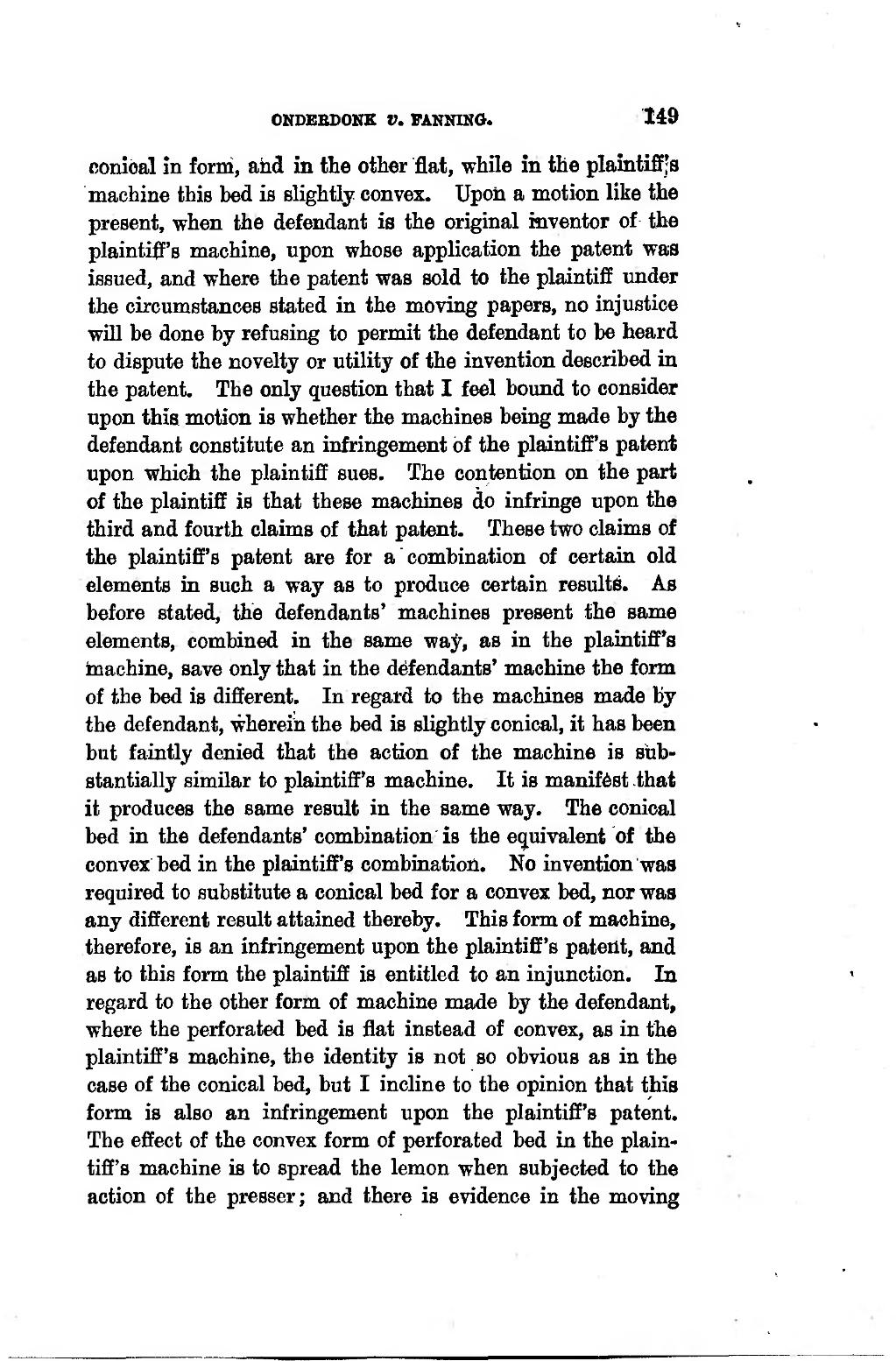ONDEBSONK V. FANNIHO. ti9 �conioal in form, ahd in the other flat, while in the plaintiff's machine this bed is slightly convex. Upon a motion like the present, when the defendant is the original inventor of the plaintiff's machine, upon whose application the patent was issued, and where the patent was sold to the plaintiff under the circumstances stated in the moving papers, no injustice ■wiU be done by refusing to permit the defendant to be heard to dispute the novelty or utility of the invention described in the patent, The only question that I feel bound to consider upon thia motion is whether the machines being made by the defendant constitute an infringement of the plaintiff's patent upon which the plaintiff sues, The contention on the part of the plaintiff is that these machines do infringe upon the third and fourth claims of that patent. These two claims of the plaintiff's patent are for a combination of certain old elements in such a way as to produce certain resulte. As before stated, the defendants' machines present the same elements, combined in the same way, as in the plaintiff's machine, save only that in the defendants' machine the form of the bed is different. In regard to the machines made by the defendant, wherein the bed is slightly conical, it bas been but faintly denied that the action of the machine is shb- stantially similar to plaintiff's machine. It is manifest that it produces the same resuit in the same vr&y. The conioal bed in the defendants' combination is the equivalent of the convex bed in the plaintiff's combination. No invention "was required to substitute a conical bed for a convex bed, nor was any different resuit attained thereby. This form of machine, therefore, is an infringement upon the plaintiff's patent, and as to this form the plaintiff is entitled to an injunction. In regard to the other form of machine made by the defendant, where the perforated bed is flat instead of convex, as in the plaintiff's machine, the identity is not so obvions as in the case of the conical bed, but I incline to the opinion that this form is also an infringement upon the plaintiff's patent. The effect of the convex form of perforated bed in the plain- tiff's machine is to spread the lemon when subjeoted to the action of the presser; and there is evidence in the moving ����
Page:Federal Reporter, 1st Series, Volume 4.djvu/163
This page needs to be proofread.
